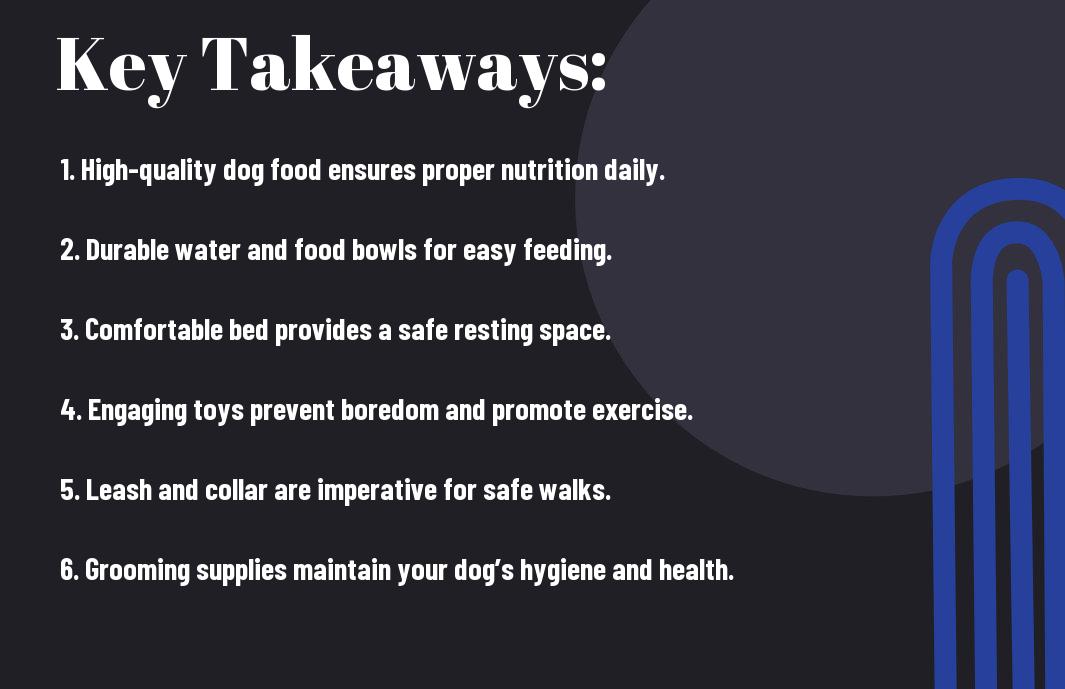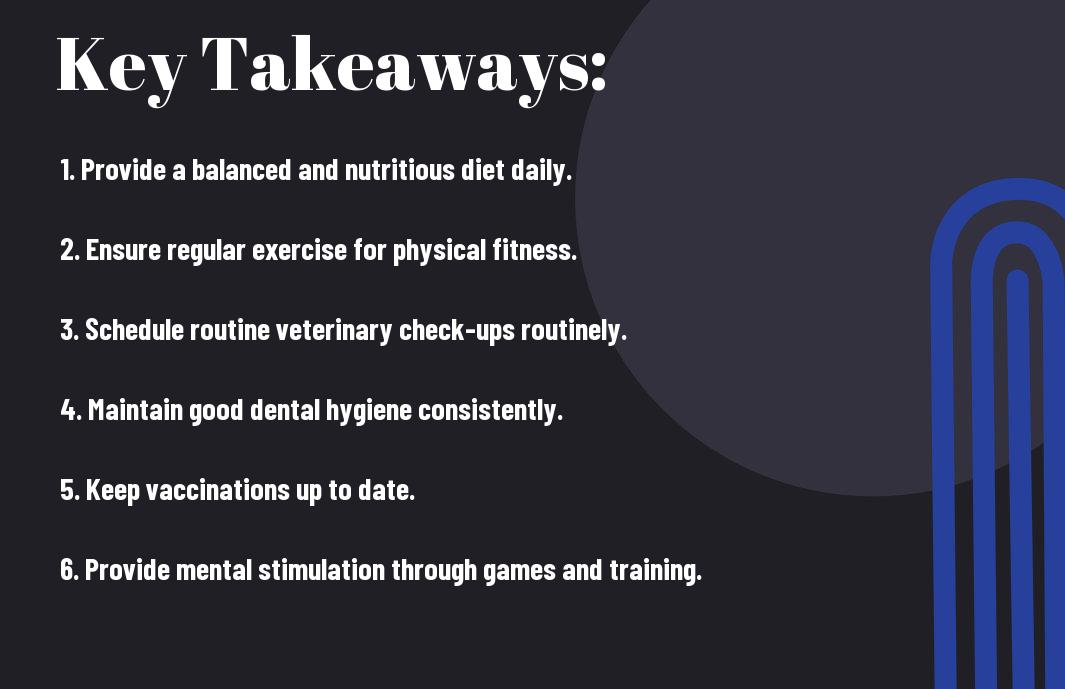With your horse’s comfort and safety in mind, traveling can be a rewarding adventure if you prepare properly. This guide provides crucial packing lists and vital safety tips to ensure both you and your horse have a smooth journey. From health documents to feeding supplies, being organized can prevent unexpected challenges and enhance the experience. Equip yourself with the right knowledge to tackle any situation confidently while on the road.
Essential Gear: What to Pack for Your Horse
Packing for your horse requires attention to both comfort and safety. Start with a well-fitted saddle, bridle, and to ensure a smooth ride. Include protective boots for their legs, a grooming kit for maintaining hygiene, and a well-stocked first aid kit for emergencies. Don’t forget a suitable blanket or sheet for varying weather conditions to keep your horse comfortable. Each item contributes to an enjoyable and safe travel experience.
Human Necessities: Rider’s Essential Packing List
Your packing list should also cater to your needs as a rider. Include suitable riding attire, such as boots and a helmet for safety, alongside appropriate clothing depending on the climate. Make sure to pack a good quality water bottle and healthy snacks to stay energized. A compact first aid kit for yourself, along with personal items like sunscreen and insect repellent, can enhance your comfort while on the road.
Equine Essentials: Must-Have Equipment for Horses
Equine importants are not only about comfort but also safety and preparedness. You should ensure to bring multiple halters and lead ropes in case of emergencies, along with a sturdy trailer tie for secure loading. Activities like riding often require fly masks and ear covers to protect against pests. Having a versatile hay net and an ample supply of feed ensures your horse stays nourished throughout your travels.
Ensure you have all necessary equipment like a hoof pick for regular maintenance, and don’t overlook water buckets for hydration during breaks. A good travel saddle bag can keep everything organized and easily accessible. In warmer climates, pack cooling boots to keep your horse’s legs relaxed after long days. Adjusting to new environments can be stressful for horses, so having familiar items like your horse’s favorite toys can help them feel more at ease while traveling.

Safety First: Ensuring a Secure Journey
Prioritizing safety during your travels with horses is vital for a secure and enjoyable experience. From ensuring your horse is fit for travel to implementing effective monitoring strategies on the road, every step counts. Adhering to a comprehensive safety protocol not only protects your horse but also promotes a stress-free journey for both you and your equine companion.
Pre-Travel Strategies: Health Check and Preparations
Conducting a thorough health check before travel is non-negotiable. Schedule a veterinary visit to ensure your horse is up to date on vaccinations and free from any health issues. Pack vital health records and familiarize yourself with the route’s regulations regarding equine travel. Establish a pre-travel checklist that includes supplies like electrolytes, first aid kits, and necessary medications to make certain you’re fully prepared.
On-the-Road Safety Measures: Monitoring and Management
Once on the road, keep a close eye on your horse’s behavior and well-being. Frequent stops allow for checks on hydration and comfort, while maintaining proper ventilation in the trailer is vital. Arrange your horse’s space to minimize movement and ensure footing is secure. Keeping a checklist of observations aids in early detection of potential issues, allowing for prompt action.
Regular breaks during your journey not only let your horse stretch and hydrate but also provide an opportunity to assess their condition. Look for signs of stress or discomfort, such as excessive sweating or vocalization, and adjust your travel schedule accordingly. Carry a digital thermometer to monitor your horse’s temperature, and utilize lower-stress trailer designs to reduce anxiety during transit. Planning for overnight stops with adequate amenities for horses further enhances their comfort, contributing to a smoother and safer journey overall.

Navigating Logistics: Travel Arrangements and Planning
Effective logistics can make or break your horse travel experience. Start by assessing your destination and the needs of your horse, aiming for a smooth journey from departure to arrival. Planning entails understanding the schedule, ensuring adequate rest stops, and maintaining communication with transport providers. It also involves preparing for unforeseen delays by having a backup plan in case of emergencies.
Choosing the Right Transportation: Trailers vs. Transport Services
Deciding between taking your own trailer and hiring a transport service hinges on factors like distance, cost, and comfort. Trailers offer the advantage of familiarity, allowing you to manage your horse’s environment, but require you to own or rent a suitable vehicle. In contrast, transport services provide professional handling and equipment, though they may limit your horse’s personal space and care. Consider your timeline and budget when making this choice.
Route Considerations: Best Practices for Long-Distance Travel
Choosing the optimal route for long-distance travel involves meticulous planning. Factor in the terrain, weather conditions, and rest stops where your horse can stretch and hydrate. Traveling during cooler periods, such as early mornings or evenings, minimizes stress for your horse. Utilize GPS tools for real-time updates on road conditions and traffic patterns, which can help you adjust your route as necessary for safety and comfort.
Monitor distances between rest areas to avoid long, uninterrupted travel. Schedule breaks every 3-4 hours to allow your horse to rest and eat, minimizing fatigue. Choosing routes with highway rest areas that permit horses can also be beneficial. Be mindful of local regulations regarding horses on public roads and ensure that your horse remains calm and hydrated throughout the journey.
Comfort and Wellbeing: Keeping Your Horses Happy
During travel, ensuring your horse’s comfort and wellbeing is vital to keep them happy and healthy. Pay close attention to their environment, guaranteeing adequate ventilation and minimal noise. Create a familiar atmosphere by including their favorite blanket or toys in the horsebox, which can help reduce anxiety. Regular breaks during long journeys allow them to stretch their legs and hydrate, making the trip more enjoyable. Your horse’s behavior is a key indicator of their comfort, so stay observant and responsive to their needs.
Routine Maintenance: Feeding and Hydration During Travel
Maintaining a consistent feeding and hydration schedule during travel helps support your horse’s wellbeing. Offer hay and water at regular intervals, as a sudden shift in diet can upset their digestive system. Keeping fresh water accessible is vital, especially on hot days; aim for at least 5-10 gallons per horse daily during long trips. Consider providing a bucket or water trough to encourage drinking, and monitor their intake to prevent dehydration.
Stress Reduction Techniques: Calming Your Horse on the Road
Utilizing stress reduction techniques creates a calmer travel experience for your horse. Familiar items, such as their own hay net or a favorite blanket, provide comfort. The use of calming supplements, such as magnesium or herbal options, can also support relaxation. Music, particularly classical or soothing sounds played softly in the transport vehicle, has been shown to calm horses during travel.
Implementing stress reduction techniques may significantly impact your horse’s state of mind during travel. By introducing rhythmic movement through slow driving and offering breaks for exercise, you help them manage anxiety. Deep breathing from the horse, facilitated by controlled environments and gradual adjustments to travel routines, can also enhance their relaxation. Practices like slow walking or hand-grazing during rest stops can further reduce stress, fostering a sense of calm and safety on the road.
Common Pitfalls: Avoiding Travel Mistakes
Avoiding travel mistakes is vital for a smooth journey with your horse. Many horse owners overlook the finer details, leading to unforeseen issues. Simple oversights—like forgetting necessary documents or neglecting to check the condition of the trailer—can turn a planned trip into a stressful experience. Knowing these common pitfalls and how to avoid them will help ensure your travel goes as planned.
Overpacking or Underpacking: Finding the Right Balance
Striking a balance between overpacking and underpacking is vital. Bring along the vitals—like feed, water, grooming supplies, and medicine—yet refrain from cramming your space with unnecessary items that add weight and clutter. A checklist tailored to your destination and duration can help prioritize the right gear while preventing excess baggage.
Misjudging Travel Times: Planning for Unexpected Delays
Traveling with horses often entails unpredictable variables that can affect your schedule. Roadwork, weather conditions, and rest stops all contribute to potential delays. Allowing extra time not only reduces stress but also ensures adequate breaks for your horse. Aim for a buffer of at least one hour beyond your estimated travel time to accommodate these unforeseen circumstances.
Planning for unexpected delays is vital to maintaining your horse’s comfort and wellbeing during travel. Always factor in possible traffic issues, such as construction or accidents, which can easily extend your journey. Weather can also play a significant role; rain or snow may slow your pace or require additional stops. By allowing extra time, you can avoid rushing, ensuring your horse is fed, watered, and rested. Keeping a flexible schedule is key to adapting as challenges arise, resulting in a more enjoyable experience for both you and your horse.
Final Words
Summing up, effective planning is key to ensuring a successful journey while traveling with horses. By following this ultimate packing checklist and safety tips, you can provide your equine companions with the care they need and manage any challenges that arise. Prioritize their well-being and your preparedness to create a smooth and enjoyable experience for both you and your horse. With the right tools and knowledge, you can begin on your travels confidently, knowing you have everything covered for a safe adventure.
FAQ
Q: What should I include in my packing checklist for traveling with horses?
A: Your packing checklist should include crucials such as: feed and water supplies, hay, a first aid kit, grooming tools, blankets, leg wraps, halters and lead ropes, buckets for water and feed, supplements, and any medications your horse may need. Additionally, ensure you have a trailer that is properly equipped and safe for transportation.
Q: What safety tips should I follow while traveling with horses?
A: Safety tips include securing all tack and equipment inside the trailer, checking that the trailer is properly hitched and in good condition, ensuring the horse is comfortable and secured with appropriate restraints, never traveling without sufficient ventilation in the trailer, and making frequent stops to check on your horse’s well-being. Keep a trusted equine professional’s contact information on hand during your trip.
Q: How can I make the journey more comfortable for my horse?
A: To enhance your horse’s comfort, provide plenty of bedding in the trailer for support, keep the travel time as short as possible, avoid traveling during extreme weather, and allow for breaks where your horse can stretch and drink water. Consider using a shipping boot or wrap to protect their legs during transit.











